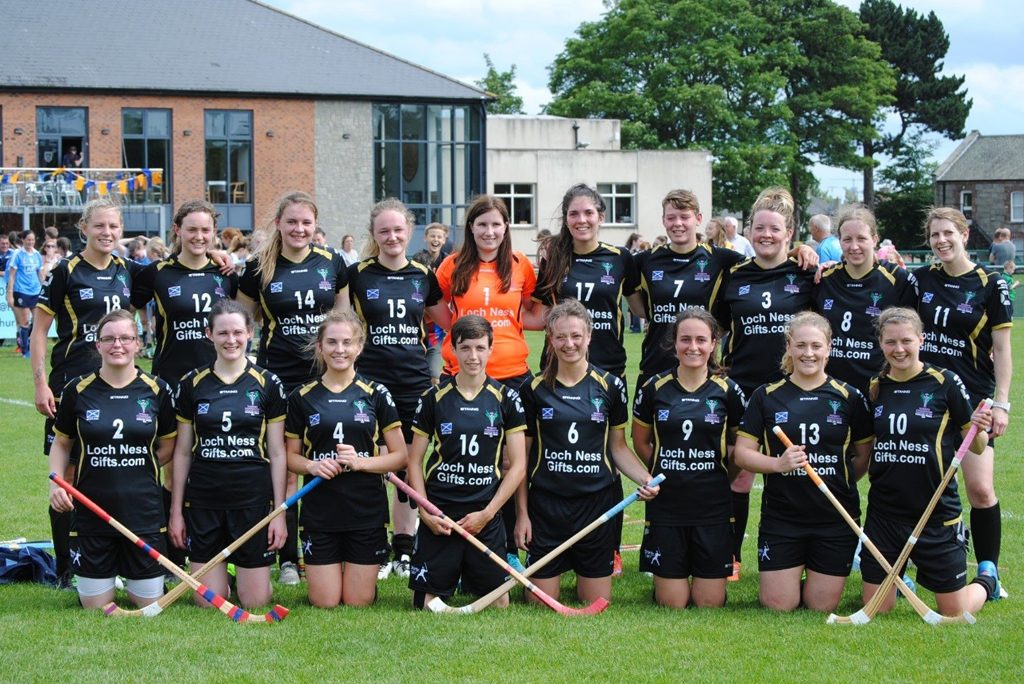If you had told me 40 years ago when I was at university that there would soon be 20 Shinty clubs with women’s teams I would never have believed you.
From its earliest days through the late 1800s, Shinty matches involved the male populations of one parish, village or district playing another, and historically the game was dominated by men. Highland Regiments played during both World Wars.
In 2017, the Camanachd Association had its first female board member Wendy Chamberlain who grew up in Fife but has family connections with Kyles of Bute, and up to 500 women are now playing the game. Fortune knows what Màiri Mhòr nan Òran would’ve said, or sung about the matter more than a hundred years ago.

Aerial view of Bellfield Park shinty ground and Ness Islands, taken in 1928
It’s not only the increase of numbers in the women’s game that is interesting, but also where we see these teams emerge. Some are to be found in the ‘usual’ places, such as Badenoch and Skye, but we’re starting to see teams from regions where there is no strong, or apparently traditional association between place and shinty – such as Aberdour in Fife.
The rate of improvement in the women’s game is almost unbelievable. Their skill, preparation, game structure, and confidence in their positioning has come on leaps and bounds. It’s now common for a shinty club to have a women’s team, and for that team to be involved in all events, both regional and national. I would say the path from school to international games against Ireland is partly responsible for this.
We haven’t quite reached equal parity yet, but there are many universities helping in this regard. They are encouraging women to acquaint themselves with the game, and to develop their skills so that when they return home, they are in a far stronger position to get involved.History
I think that’s something worth celebrating, and hope that with the rise of the women’s game, shinty will continue to be an important part of Scottish heritage.

Katy Smith, Scottish National Team, Player of the Match in Dublin County Ladies vs Scotland 15 July 2017
When it comes to giving Ireland a run for its money, we have a wee bit to go yet. The truth of the matter is that the women’s game in Ireland is streets ahead of our own, and with that comes an understanding and a reasonable assumption of what we can presently achieve. They have been playing for years; they have numbers and resources that won’t be beaten first time around. However, that’s not to say that we can’t have a go, and to welcome them to Scotland when the men’s international games are taking place.
I wouldn’t say that the women’s game is ready for television just yet. It’s suitable for small reporting and write ups, but the day will come I wager that we will see full games broadcast.
If women’s football has a struggle getting into the mainstream media, it’s no mean task for women’s shinty to get themselves onto the back pages of the newspapers. But little by little, we will see more progress being realised in women’s shinty in Scotland.
If you’d like to hear more from Hugh Dan MacLennan you can f find him on X @hughdansport.
This blog is also available in Gaelic. It was first published in 2017 but has been updated in 2024.

